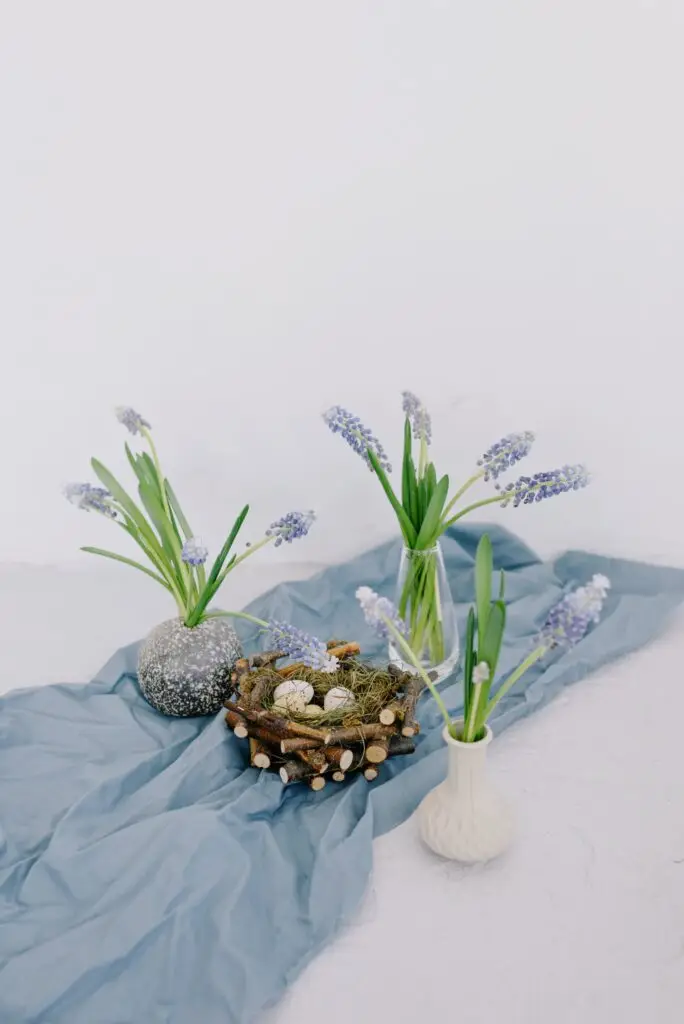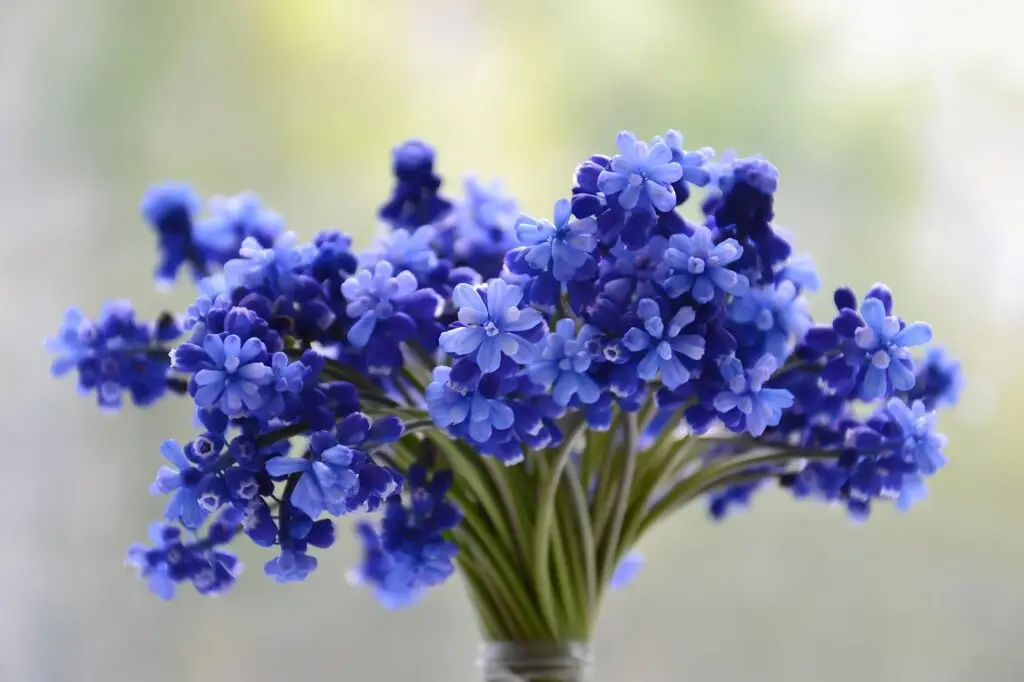Muscari
| Name: Muscari | Family: Asparagaceae | Type Plant: Perennial bulb |
| Flowering time: Early to mid-spring (March to April) | Best time to buy: Autumn (for planting bulbs) or early spring (when in bloom) | Max Height: 10-25 cm |
| Sun/Shadow: Full sun to partial shade |
Origin
The Muscari originates in different places around the world. It naturally grows in Mediterranean areas, in Europe, North-Africa, Central- and Southwest-Asia and even in North America. They can be found in the Netherlands as well, in woods and meadows.
There are approximately 50 different species of the Muscari and the most common ones have a blue colour. But there are other colours of Muscari flowers as well, such as white, purple, light blue and even two-toned kinds.
Characteristics
The flowers of the Muscari are bell-shaped and come in spike-shaped branches. The branches eventually grow out to be lose flowered with a length up to seven centimetres.
Colours of the Muscari leaves can vary in different shades of green. Every single Muscari has two to three leaves that are elongated and have the same length as the stem.
Care
Caring for the Muscari is not difficult at all. The flower doesn’t need any extra flower food or nutrients because it has stored enough of those during the growth.
It is important that the stems are cut off and that a clean vase is used, filled with lukewarm water.
Blooming time
In general, the Muscari is associated with spring, but it actually blooms earlier than that. In late winter and early spring, the first buds will bloom which make the Muscari a popular flower to add some colours to a home when the first signs of spring present themselves.
The Muscari can give a classical, sleek appearance when placed neatly in a vase, but can also give a flower addition something extra when added to it








